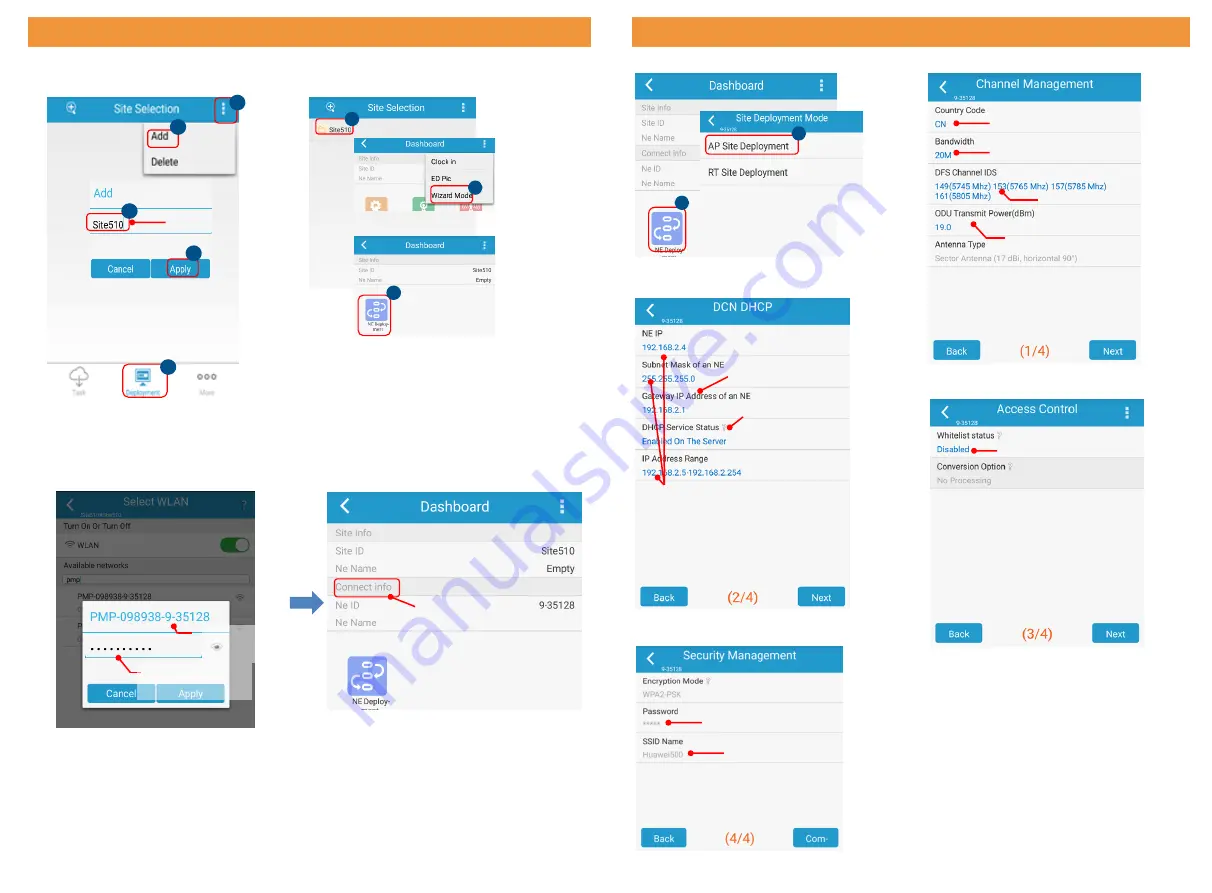
11. Configuring AP Deployment Data Using MDT
1
2
3
4
Customize the
name of a new
site.
5
1. Create a site for the new AP.
2. Enable the wizard mode.
3. Connect to the AP through the WLAN.
Default SSID: PMP-
last six digits of the
MAC address-NE ID
After the connection is
successful, the NE
information is displayed.
Default password:
Modify_123
1
2
3
11. Configuring AP Deployment Data Using MDT
Set this parameter based on the country
where the site is located.
Set this parameter based on the planning
document. If the planned bandwidth is 40
Mbit/s, select 40M
– or 40M+.
Set this parameter based on the planning
document.
Generally, the frequency range is
provided in the planning document.
Select all channels between the
frequency range.
If the DHCP server is enabled and the
upper-layer network is a Layer 3 network,
set this parameter to the IP address of the
sub-interface created by the upper-layer
router for the DCN.
If APs are not deployed on the same site,
set this status to
Enabled On The Server
.
When APs are deployed on the same site,
only one AP is configured as
Enabled On
The Server
, and other APs are configured
as
Enabled On The Client
.
When the DHCP server is enabled, set this parameter based
on the IP address of the sub-interface created on the router
for the DCN (if the upper-layer network is a Layer 2 network,
the IP address of the eSight server is used). Set the subnet
mask to the subnet mask of the network segment. The NE IP
address is the IP address allocated to the AP in the network
segment. The IP addresses are allocated by the AP to the
RT (When APs are deployed on the same site, IP address
resources of other APs and its subordinate APs are also
included). Do not set the IP address for other situations.
4. Choose the site deployment mode.
5. Configure channels.
6. Configure DCN.
This parameter is set to
Disabled
during deployment.
7. Set the RT white list.
8. Set WLAN.
Do not change the WLAN
password during deployment.
When APs are deployed
on the same site, SSIDs
must be set to different
values.
1
2




